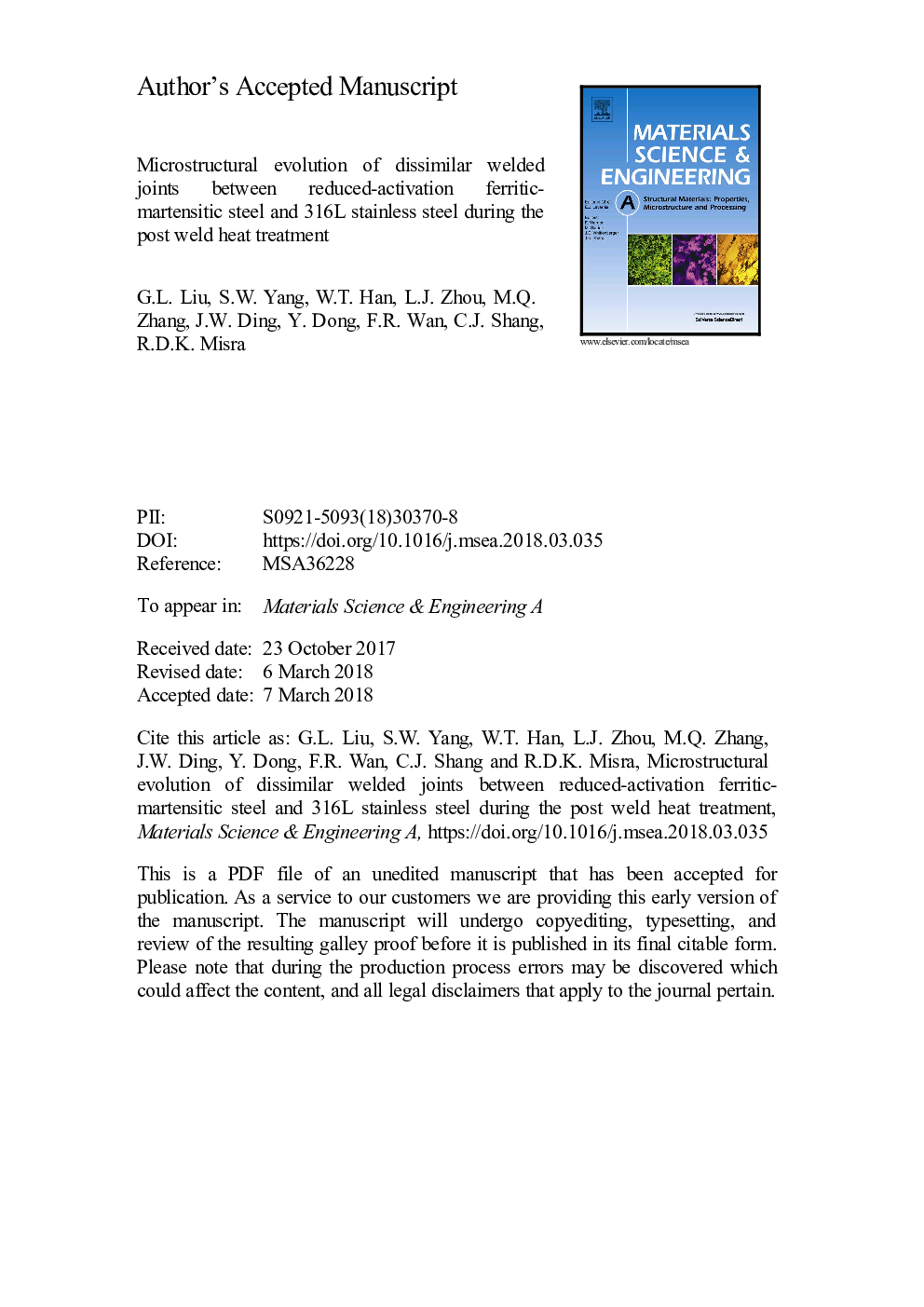| Article ID | Journal | Published Year | Pages | File Type |
|---|---|---|---|---|
| 7972792 | Materials Science and Engineering: A | 2018 | 36 Pages |
Abstract
In the present study, electron beam welding (EBW) was used to join reduced-activation ferritic-martensitic (RAFM) steel to 316L stainless steel. Microstructural evolution and mechanical property variation in the heat-affected zone (HAZ) and weld metal (WM) during the post weld heat treatment (PWHT) was investigated. The results suggested that the hardness of RAFM-HAZ decreased with increased PWHT temperature, while the hardness of WM decreased to minimum at 620â¯â and then increased at higher PWHT temperatures. This was consistent with strength variation in the WM during PWHTs. Microstructural observations and corresponding phase diagram calculation indicated that blending of two types of base metals increased nickel content of WM, enlarged the two phase-region and lowered A1 (start of transformation of ferrite to austenite) point of WM, as compared with similar ferritic-martensitic steel weld joint. Thus, reversed austenite transformation and subsequent martensite transformation occurred in WM of sample subjected to higher temperature heat treatment, while there was no transformation in the HAZ. This effect explained the changes in hardness and strength of WM corresponding to PWHT. The optimized properties of both HAZ and WM in the dissimilar weld joint were obtained by a two-step post weld heat treatment.
Keywords
Related Topics
Physical Sciences and Engineering
Materials Science
Materials Science (General)
Authors
G.L. Liu, S.W. Yang, W.T. Han, L.J. Zhou, M.Q. Zhang, J.W. Ding, Y. Dong, F.R. Wan, C.J. Shang, R.D.K. Misra,
